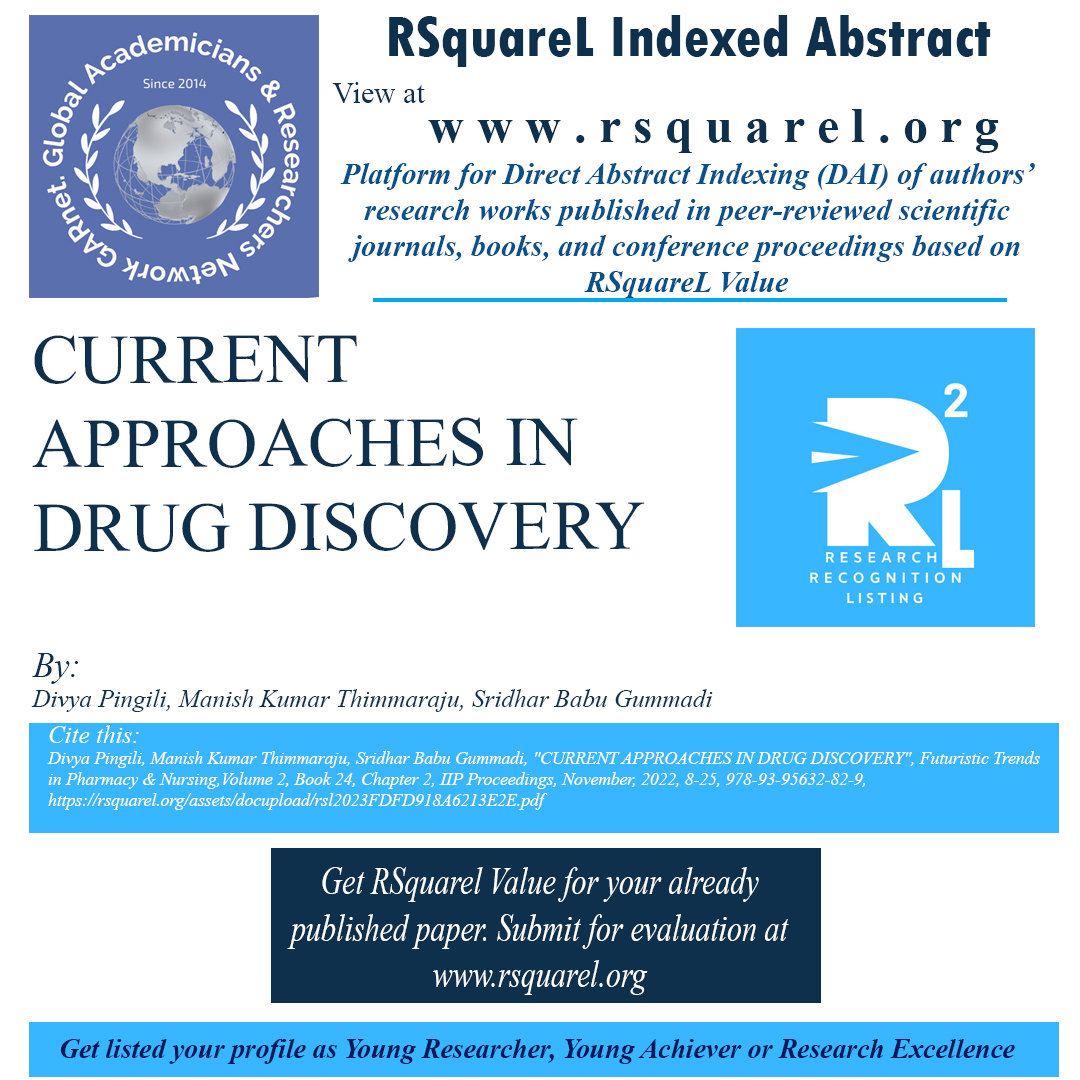CURRENT APPROACHES IN DRUG DISCOVERY
Area/Stream: Pharmacy & Nursing, Authors: Divya Pingili, Manish Kumar Thimmaraju, Sridhar Babu Gummadi Keywords: Computer aided drug design, Structure based drug design, and Ligand based drug design Book Name /series: Futuristic Trends in Pharmacy & Nursing,Volume 2, Book 24, Chapter 2Publication: IIP Proceedings Year: 2022, Month: November Page No: 8-25, ISSN/ISBN: 978-93-95632-82-9, DOI/Link: https://rsquarel.org/assets/docupload/rsl2023FDFD918A6213E2E.pdf
Abstract:Computer-Aided Drug Design (CADD) evolved as an efficient method for finding prospective lead compounds and facilitating the creation of potential medications for a wide variety of ailments. Numerous computer methods are currently employed to find potential lead compounds from vast compound libraries. The applications of the CADD technique to drug development are advancing constantly. Recent trends in drug design emphasize the rational design of effective therapies with multi-targeting effects, increased efficacy, and fewer side effects, particularly in terms of toxicity. In this chapter, we present a brief overview of CADD and describe structure-based drug design (SBDD) and ligand-based drug design (LBDD), as well as their applications in identifying viable therapeutic candidates.
